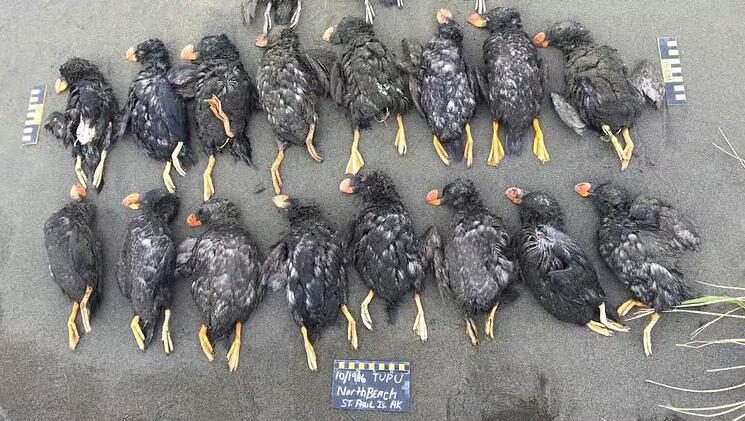
© Aleut Community of St. Paul Island Ecosystem Conservation OfficeTufted puffins in October 2016.
Marine heatwaves off the coast of North America cause huge seabird die-offs, according to a study
published in
Marine Ecology Progress Series.
The study draws on data from four citizen science projects to examine coastal birds
from central California, US, to Alaska, US, between 1993 and 2021."This is truly a global data set that asked a global-sized question: Does a warming world significantly impact marine birds, among the top predators in the nearshore marine environment?" says paper co-author Julia Parrish, a professor of aquatic and fishery sciences at the University of Washington, US.
"We find a dramatic delayed effect," she adds.
"A warmer ocean, and certainly a suddenly warmer ocean as happens during an El Niño or a marine heat wave, will result in the death of hundreds of thousands to millions of marine birds within one to six months of the temperature increase."The researchers examined data from coastal surveys taken by citizen scientists:
COASST,
BeachCOMBERS,
Beach Watch, and the
British Columbia Beached Bird Survey.
Each of these projects trains volunteers to find and record dead birds on beaches in the US and Canada.
In total, the researchers collated 90,000 surveys of 106 seabird species on more than 1,000 beaches.
"Rather than track the specific numbers of any one species,
this study measures the magnitude of mortality events, regardless of seabird species, above long-term normal," says Parrish.
"We asked: What rate are carcasses washing in, over what portion of coastline, and for how many months? Larger-magnitude events are those that push up all these measures."
They found a clear connection between marine heatwaves and seabird die-offs in the last 30 years.Of particular note was five events between 2014 and 2019, each of which had at least a quarter of a million bird deaths."This is unprecedented.
This type of massive die-off can be compared to a catastrophic storm that we would usually expect once per decade; they happen, causing massive damage, but usually there is enough time for areas to recover," says lead author Timothy Jones, a UW research scientist in aquatic and fishery sciences.
"From 2014 to 2019, the die-offs were not only some of the largest ever documented, but they kept happening year after year — like a catastrophic storm hitting without fail every year."
The precise cause of each die-off is different, but all are warming-related, according to the researchers: things like harmful algal blooms, disease spread, and changes in the food available."With this intensity of warming, like the
looming El Niño in the Pacific or the current marine heatwave in the North Atlantic, we are facing a new ocean," says Parrish.
"One with fewer birds."

Comment: The data is showing that Earth isn't warming, it's cooling; but there are indeed marine heatwave events occurring, alongside a variety of other unusual and rare phenomena, that reveal our planet - and the solar system at large - is undergoing a significant, and potentially catastrophic, shift: